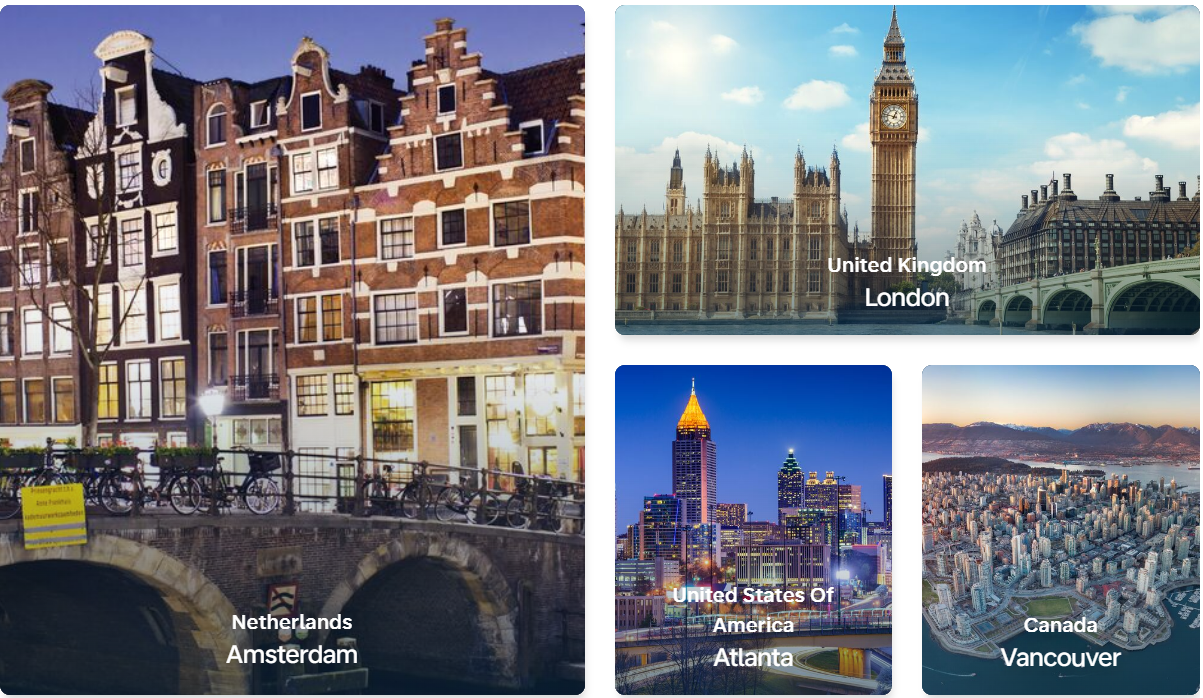
In recent years, the way we travel has come under increasing scrutiny. From carbon emissions to over-tourism, the environmental impact of tourism is undeniable. But that doesn’t mean we have to stop exploring the world. Eco-friendly travel, also known as sustainable or responsible travel, offers a way to see the world while minimizing our footprint and preserving natural and cultural heritage for future generations.
What is Eco-Friendly Travel?
Eco-friendly travel refers to travel practices that prioritize environmental conservation, cultural respect, and social responsibility. It involves being mindful of how your journey affects the places you visit—from local ecosystems to the people who call those places home.
The goal of eco-travel isn’t to be perfect; it’s to make better choices that contribute to sustainability. Whether it’s reducing waste, supporting local economies, or choosing greener transportation options, every small step helps.
Why Eco-Friendly Travel Matters
1. Environmental Preservation
Tourism can strain natural resources, contribute to pollution, and damage fragile ecosystems. For instance, air travel is a major source of carbon emissions, while excessive waste from single-use plastics litters beaches and forests worldwide. Sustainable travel seeks to counterbalance this impact by promoting eco-conscious choices that protect the environment.
2. Cultural Respect and Authenticity
Irresponsible tourism can lead to cultural exploitation and the erosion of local traditions. Eco-travel encourages travelers to engage with cultures respectfully, learn from them, and support local artisans, guides, and businesses.
3. Economic Equity
Sustainable travel also helps distribute tourism dollars more evenly. Instead of only benefitting large corporations, responsible tourism supports small, local businesses and communities that rely on tourism for income.
Key Principles of Eco-Friendly Travel
To travel responsibly, it’s essential to follow a set of guiding principles:
- Leave No Trace: Respect nature by not disturbing wildlife or littering.
- Support Local Economies: Eat local food, stay in locally-owned accommodations, and buy handmade souvenirs.
- Tread Lightly: Reduce your carbon footprint by choosing sustainable transport and accommodations.
- Respect Cultures and Communities: Learn about local customs and seek permission when taking photos or entering sacred spaces.
- Educate Yourself: Understand the environmental and social challenges your destination faces.
Pre-Trip Planning: Start With Sustainability
Eco-friendly travel begins long before you board a plane. Here’s how you can make responsible decisions from the get-go:
1. Choose Eco-Conscious Destinations
Some countries and cities are more committed to sustainability than others. Look for destinations that invest in renewable energy, protect biodiversity, and have responsible tourism policies. Examples include:
- Costa Rica: Known for its extensive protected parks and eco-lodges.
- Bhutan: Prioritizes Gross National Happiness and limits tourist numbers.
- Slovenia: A leader in green tourism with a strong focus on sustainability.
2. Travel During Off-Peak Seasons
Over-tourism can strain popular destinations. Visiting during off-peak times helps reduce pressure on local infrastructure and gives you a more authentic experience.
3. Pack Light and Smart
Packing light reduces the weight of your luggage and fuel consumption in transport. Choose multi-use items, reusable water bottles, bamboo cutlery, and eco-friendly toiletries (biodegradable soap, reef-safe sunscreen, etc.).
Transportation: The Journey Matters
Transportation is often the most carbon-intensive part of travel. Making conscious choices here can drastically reduce your environmental footprint.
1. Fly Less, Stay Longer
Flying is sometimes unavoidable, especially for international trips. But you can make your flight count by staying longer in one place rather than hopping between multiple destinations.
2. Offset Your Carbon Emissions
Many airlines and third-party organizations offer carbon offset programs that fund renewable energy, reforestation, or clean water projects. While not a perfect solution, it’s a step in the right direction.
3. Use Trains, Buses, or Shared Rides
Whenever possible, opt for ground transportation. Trains, in particular, are a scenic and lower-emission alternative to flying or driving.
4. Walk or Bike
Once at your destination, explore on foot or by bicycle. It’s a great way to see the sights, interact with locals, and lower your carbon footprint.
Eco-Friendly Accommodations
Where you stay can have a big impact on the local environment and economy.
1. Choose Green Hotels or Eco-Lodges
Look for certifications like LEED, Green Key, or EarthCheck that indicate a hotel’s commitment to sustainability. Eco-lodges often incorporate renewable energy, composting, and local materials in their design.
2. Conserve Resources
Be mindful of your water and energy use. Reuse towels and sheets, turn off lights and air conditioning when leaving the room, and take shorter showers.
3. Support Community-Based Tourism
Stay with local families (homestays) or in community-owned lodges. This not only gives you a more intimate cultural experience but ensures your money benefits local people directly.
Eating and Drinking Sustainably
Food is a huge part of travel—and an opportunity to make eco-friendly choices.
1. Eat Local and Seasonal
Choose restaurants that serve local dishes using seasonal ingredients. This reduces the carbon footprint associated with food transport and supports local farmers and chefs.
2. Avoid Chain Restaurants
Opt for small, family-run eateries instead of multinational chains. It’s more authentic, and your money stays in the local economy.
3. Say No to Single-Use Plastics
Bring your own reusable water bottle, coffee cup, and utensils. In places where tap water isn’t safe, use a portable water filter or UV purifier.
Activities and Tours: Choose Responsibly
The activities you participate in can have a profound effect on the environment and local communities.
1. Avoid Exploitative Wildlife Tourism
Never participate in tours that allow direct contact with wild animals (like elephant rides, tiger selfies, or swimming with captive dolphins). Instead, support ethical wildlife sanctuaries or go on guided nature tours in the wild.
2. Choose Eco-Tours
Select tour companies that are certified or recognized for sustainable practices. Look for small group sizes, environmentally respectful policies, and local guides.
3. Respect Sacred and Cultural Sites
Follow local guidelines, dress modestly where appropriate, and avoid disrupting religious or cultural ceremonies.
Volunteering and Giving Back
If you want to leave a positive impact, consider giving back to the places you visit.
1. Volunteer Ethically
Volunteering can be a great way to connect with a community—if done responsibly. Avoid “voluntourism” programs that exploit vulnerable populations or displace local workers. Choose organizations with transparent goals, local leadership, and meaningful outcomes.
2. Support Conservation Projects
Many eco-lodges or travel companies allow you to participate in local conservation efforts, like tree planting or beach cleanups.
3. Donate Consciously
Instead of giving cash to street beggars or children, donate to vetted local NGOs or initiatives that address the root causes of poverty and environmental degradation.
Traveling With Kids: Teaching the Next Generation
Traveling with children is an opportunity to instill eco-conscious values early on.
- Involve them in sustainable decisions like packing reusable gear.
- Choose educational activities that teach them about wildlife, ecosystems, or indigenous cultures.
- Model respectful behavior toward the environment and locals.
Eco-travel can become a meaningful part of their education and worldview.
The Challenges of Eco-Friendly Travel
Let’s be real—traveling sustainably isn’t always easy. It might cost a little more, require more planning, or force you to forego certain conveniences. But it’s worth it.
The good news? Eco-travel is becoming more accessible. More destinations are offering eco-lodges, carbon offset options are easier to find, and awareness about sustainable travel is growing rapidly.
You don’t have to do it perfectly. The goal isn’t guilt—it’s growth. Every responsible choice, no matter how small, adds up.
Final Thoughts: Be the Change You Want to See
Eco-friendly travel is about more than reducing your impact—it’s about being a better guest. It’s about traveling not just for personal enrichment, but in a way that also enriches the places and people you visit.
In an age when climate change, biodiversity loss, and cultural homogenization are urgent issues, choosing to travel responsibly is one of the most powerful decisions a traveler can make.
So go ahead—explore, experience, enjoy—but do it with mindfulness. The world is beautiful, and with thoughtful choices, we can help keep it that way.
Quick Tips for Responsible Travel (Checklist)
- ✅ Fly less, stay longer
- ✅ Offset your carbon emissions
- ✅ Pack reusable items (bottle, bag, utensils)
- ✅ Avoid single-use plastics
- ✅ Choose local food and businesses
- ✅ Respect local customs and dress codes
- ✅ Leave no trace in nature
- ✅ Avoid unethical animal tourism
- ✅ Support eco-certified accommodations and tours
- ✅ Give back to communities through ethical means






















